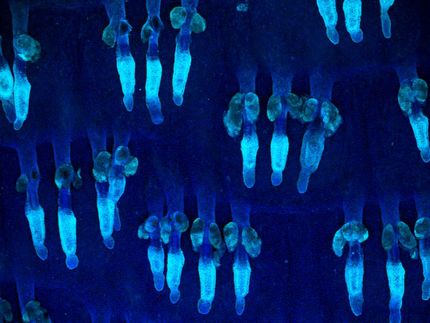Stretching DNA to the Limit
DNA damage in a new light
Advertisement
It has long been known that UV light can damage DNA, reducing its ability to replicate and interact with proteins, and often resulting in the development of skin cancers. However, not much is known about how the elasticity of DNA strands is altered upon exposure to UV light. Now a group of researchers at Duke University have developed a method to measure changes in the mechanical properties of DNA upon irradiation with UV light.
Piotr Marszalek and his colleagues have conducted single-molecule force spectroscopy measurements on viral DNA, which show the unraveling of the DNA double helix upon exposure to UV irradiation. The researchers essentially pick up individual DNA molecules with the tip of a scanning probe microscope and stretch it while measuring the forces generated.These stretch release measurements enable the accurate determination of changes in the elasticity of the DNA strands. Upon exposure to UV light, the force profile of the viral DNA changes dramatically in a dose-dependent manner. The force curve of intact DNA is characterized by a plateau region. This characteristic plateau is drastically reduced in width with increasing exposure to UV light.
UV light induces the crosslinking of the constituent DNA bases within the polynucleotide chains, as well as causes the formation of lesions by linking together the adjacent strands. The small changes in structure induced by this crosslinking can very profoundly affect the ability of DNA to recognize specific molecules, and can thus completely disrupt its ability to replicate and interact with the transcriptional machinery to synthesize proteins. Marszalek and his colleagues have also examined synthetic DNA to figure out the extent to which different bases are affected by UV light. They conclude that the changes in the force profile of viral DNA exposed to UV light are due to the local unwinding of the double helix in some regions arising from the massive formation of crosslinked structures.
These are the first measurements that establish a relationship between DNA nanomechanics and damage, said Marszalek. He believes that this work paves the way for using stretch release force spectroscopy measurements in DNA diagnostics.
Original publication: Piotr E. Marszalek et al.; "Nanomechanical Fingerprints of UV Damage To DNA"; Small 2007, 3, No. 5, 809-813.
Other news from the department science
Most read news
More news from our other portals
See the theme worlds for related content
Topic World Spectroscopy
Investigation with spectroscopy gives us unique insights into the composition and structure of materials. From UV-Vis spectroscopy to infrared and Raman spectroscopy to fluorescence and atomic absorption spectroscopy, spectroscopy offers us a wide range of analytical techniques to precisely characterize substances. Immerse yourself in the fascinating world of spectroscopy!

Topic World Spectroscopy
Investigation with spectroscopy gives us unique insights into the composition and structure of materials. From UV-Vis spectroscopy to infrared and Raman spectroscopy to fluorescence and atomic absorption spectroscopy, spectroscopy offers us a wide range of analytical techniques to precisely characterize substances. Immerse yourself in the fascinating world of spectroscopy!

























































